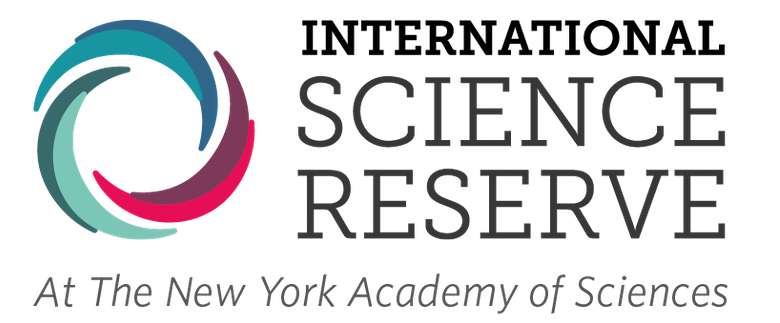The ISR and Traditional Environmental Stewardship
Published May 11, 2022
By Nicholas B. Dirks
President and CEO

Crossing the streams has always been part of my academic career. As a historian and cultural anthropologist, my own research and writing has been rooted in the value of interdisciplinary thought. I have been fortunate to draw together insights from colleagues who largely work in separate if contiguous worlds. When bridging disciplines as separate as those in the humanities and social sciences with the sciences, however, the efforts we make to connect must be even more strenuous. At the same time, the rewards that can come from this kind of exchange are even greater.
I strongly believe we need to create new ways to learn from differing perspectives and disciplines. This means more than interdisciplinary inquiry, as it can also be about linking traditional forms of knowledge with those that come from cutting edge research and analysis.
This kind of capacious thinking lies at the heart of our commitment at The New York Academy of Sciences to promote science-based solutions to global challenges through our International Science Reserve (ISR), which is designed to mobilize and use different kinds of knowledge from across borders, sectors, and disciplines.
In my own areas of expertise, I know that the decades between the 1970s and end of the 20th century saw the disciplines of history and anthropology draw closer together, with historians paying more attention to social and cultural factors and the significance of everyday experience in the study of the past.
The people, rather than elites, became the focus of their inquiry—anthropological insights into agriculture, kinship, ritual, and folk customs enabled historians to develop richer and more inclusive narratives about social structures and relationships, as well as about human relationships with the environment over the long period of time we now call the Anthropocene. In the same way, the ISR will aim to bring together not only cutting-edge scientific expertise but also past knowledge that may come from an era when we were more attuned to natural rhythms and processes than we are today, when industrialization and technological development have created new levels of autonomy from the natural world.
The ISR recently launched its first scenario planning exercise—focusing on how scientific expertise and resources can be mobilized to combat wildfire emergencies. Wildfires are not new environmental phenomena; human civilization has lived alongside the risk of wildfires for thousands of years. And so, as wildfires increase in both frequency and magnitude due to climate change, we can learn from indigenous communities and traditional forms of knowledge when it comes to environmental stewardship.
In California, which saw a record-breaking season of devastating wildfires in 2020, local knowledge from the Yurok and Karuk Northern California tribes may hold the key to managing wildfires through ‘cultural burns.’ This is a practice which involves
intentional burning designed to cultivate biodiverse landscapes, remove excess fire fuel, and ensure that the ecosystem is more resilient overall. Indigenous preparation of the land has been practiced for thousands of years but it is only recently being recognized as an effective tool to control fire risk.
After a century of fire suppression, enforced by laws which prevented cultural burning, the Yosemite and Sequoia-Kings Canyon National Parks in California’s Sierra Nevada initiated programs to manage wildfires through burning programs. A recent UC Berkeley Study of the Illilouette Creek Basin in Yosemite showed that where traditional fire regimes were restored, there were multiple positive effects: greater landscape and species diversity, increased soil moisture, decreased drought-induced tree mortality, and more landscape fire resistance due to a reduced forest cover.
Decreased forest cover during the managed wildfire period means that when an unintended fire is started (by lightning strike for instance), the more varied landscapes – with trees, shrubland, bushes all at different heights – were more resilient to fire. In contrast, when the crowns of trees catch fire in a homogenous forest canopy, a blaze can spread rapidly along the top of the uniform tree canopy, helping the fire spread more quickly.
The view that indigenous burning can benefit forest ecosystems is gaining growing acceptance among policy makers in different parts of the world as evidenced by the Aboriginal burning regimes in Kakadu national park in Australia and Pilanesberg National Park in South Africa. Meanwhile in the US, the federal Forest Service increasingly partners with Tribes to improve wildfire resilience and protect cultural resources through the Tribal Relations Program. In California, fire suppressing laws have been reversed with a new California law, effective January 1, 2022, affirming the right to cultural burns, reducing the layers of liability and permission needed to set fire to the land for the purposes of controlled forest management.
Recognizing indigenous knowledge benefits our understanding of wildfire management in the 21st century and provides insights into other challenges such as biodiversity loss, including even the hunt for new drugs such as antibiotics. This is reinforced in the findings of the IPBES Global Assessment Report on Biodiversity and Ecosystem Services that indigenous and local knowledge plays a large part in preventing wildfire and other crises.
For habitats in which indigenous people and local communities can manage their land, there is less loss of biodiversity and ecosystem function. For example, in the Amazon (region of Bolivia, Brazil and Colombia): wherever indigenous people have secure tenure, the deforestation rates are two-to-three times lower than in similar forests where they don’t have control over the forests.
Increased recognition of such knowledge will also help retain traditional culture and inform land management policy, which has historically excluded indigenous voices and banned indigenous practices.
This is why the ISR and The New York Academy of Sciences proudly aligns with ‘Open Science’ principles and welcomes involvement from everyone – regardless of discipline or geography – within our community of experts. Everyone may register to encourage project proposal submissions in relation to ISR identified crisis areas, so that we are able to benefit from the rich and diverse forms of knowledge that in some cases have been part of our heritage for centuries – particularly in terms of environmental stewardship.
Indeed, our first call for proposals on the topic of wildfires included submissions from a range of countries including Brazil and the Philippines as well as the US and Australia. I strongly support the incorporation of different sources of knowledge in the service of a larger, shared culture of enquiry and practice, ultimately adapting modern and traditional modalities of knowledge for the work of science in developing appropriate and effective solutions for tackling the global challenges that we all face today.
